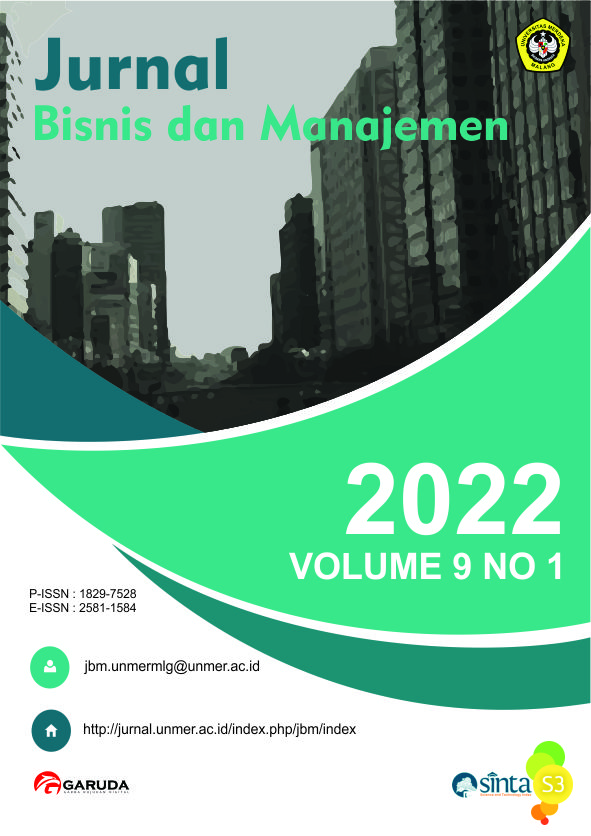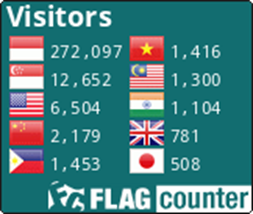Open Innovation: Analisis Gamification terhadap Intention of Engagement dan Brand Attitude
DOI:
https://doi.org/10.26905/jbm.v9i1.7634Keywords:
Open Innovation, Gamification, Intention of Engagement, Brand Attitude, User’s ParticipationAbstract
This study aims to analyze the effect of gamification on the intention of engagement and brand attitude. This study also aims to identify and analyze user involvement in gamification activities as an open innovation process in the field of marketing. Questionnaires were distributed to 170 respondents and analyzed using SEM-PLS. The results of this study are the dimensions of perceived enjoyment have a positive and significant effect on the intention of engagement and brand attitude. The dimensions of perceived usefulness and perceived social influence only affect brand attitude. The perceived ease of use has no significant effect on the intention of engagement and brand attitude. In the context of user participation in open innovation, collaboration between users and Shopee does not seem to have a strong level of involvement. In the protection dimension, all games presented at Shopee Games have met the element of protection of intellectual property, which indicates an element of unique ideation as part of the sustainability of open innovation practices.
Downloads
References
Brodie, R. J., Ilic, A., Juric, B., & Hollebeek, L. (2013). Consumer Engagement in a Virtual Brand Community: An Exploratory Analysis. Journal of Business Research, 66(1), 105–114.
Change.org. (2020). Hapus Fitur "Ambil Air Teman. https://www.change.org/p/shopee-indonesia-hapus-fitur-ambil-air-teman-di-shopee
Creswell, J. W. (2018). Research Design: Qualitative, Quantitative, and Mixed Methods Approaches. In Paper Knowledge . Toward a Media History of Documents. SAGE.
Ebersberger, B., Bloch, C., Herstad, S. J., & Van De Velde, E. (2012). Open innovation practices and their effect on innovation performance. International Journal of Innovation and Technology Management, 9(6). https://doi.org/10.1142/S021987701250040X
Gartner Research. (2011). Gartner Says by 2015, More Than 50 Percent of Organizations That Manage Innovation Processes Will Gamify Those Processes. www.gartner.com/newsroom/id/1629214
Gass, R. H. (2015). Social Influence , Sociology of. In International Encyclopedia of Social & Behavioral Sciences (Second Edition, Vol. 22, Nomor 1935). Elsevier. https://doi.org/10.1016/B978-0-08-097086-8.32074-8
Gimenez-Fernandez, E., Abril, C., Breuer, H., & Gudiksen, S. (2021). Gamification approaches for open innovation implementation: A conceptual framework. Creativity and Innovation Management, 30(3), 455–474. https://doi.org/10.1111/caim.12452
Grodal, S. (2015). Networks of Innovators (Nomor January 2005). Oxford. https://doi.org/10.1093/oxfordhb/9780199286805.003.0003
Hair, J. F., Anderson, R. E., & Tatham, R. L. (2012). Multivariate Data Analysis with Reading. Prentice-Hall International Inc.
Hair, J.F., Risher, J. J., Sarstedt, M., & Ringle, C. M. (2019). When to use and how to report the results of PLS-SEM. European Business Review, 31(1), 2–24.
Hair, Joseph F., Hult, G. T. M., Ringle, C. M., & Sarstedt, M. (2012). A Primer on Partial Least Squares Structural Equation Modeling (PLS-SEM). In SAGE Publications (1st ed.). SAGE Publications.
Hamari, J., Koivisto, J., & Sarsa, H. (2014). Does gamification work? –A literature review of empirical studies on gamification. Proceedings of the 47th Hawaii International Conference on System Sciences, 6–9.
Hamari, Juho, & Koivisto, J. (2015). Computers in Human Behavior ‘“ Working out for likes â€â€™: An empirical study on social influence in exercise gamification. Computers in Human Behavior, 50, 333–347. https://doi.org/10.1016/j.chb.2015.04.018
Harwood, T., & Garry, T. (2015). An investigation into gamification as a customer engagement experience environment. Journal of Services Marketing, 29(6–7), 533–546. https://doi.org/10.1108/JSM-01-2015-0045
Huotari, K., & Hamari, J. (2017). A definition for gamification: anchoring gamification in the service marketing literature. Electronic Markets, 27(1), 21–31. https://doi.org/10.1007/s12525-015-0212-z
Hyypiä, M., & Parjanen, S. (2015). Gamification as an Intervention Method in Practice-Based Innovation. 12(4), 1–22. https://doi.org/10.1142/S0219877015500182
Kantar. (2021). Ini Dia Jawara E-Commerce Indonesia Tahun 2021. https://beritadiy.pikiran-rakyat.com/nasional/pr-703126550/ini-dia-jawara-e-commerce-indonesia-tahun-2021
Keeley, L., Pikkel, R., Quinn, B., & Walters, H. (2013). Ten Types of Innovation : The Discipline of Building Breakthrough. John Wiley & Sons, Inc.
Kotler, P., & Armstrong, G. (2018). Principles of Marketing 17th Global Edition. In Pearson Education Limited.
Lu, H. P., & Ho, H. C. (2020). Exploring the impact of gamification on users’ engagement for sustainable development: A case study in brand applications. Sustainability (Switzerland), 12(10). https://doi.org/10.3390/su12104169
Malhotra, N. K. (2016). Marketing Research: An Applied Orientation. In Pearson (6th ed.). Pearson.
Meloni, W., & Gruener, W. M. R. (2012). Gamification in 2012.
Monecke, A., & Leisch, F. (2012). SemPLS: Structural equation modeling using partial least squares. Journal of Statistical Software, 48(3), 1–32. https://doi.org/10.18637/jss.v048.i03
Neuman, W. L. (2014). Social Research Methods: Qualitative and Quantitative Approaches. In Teaching Sociology. Pearson Education Limited. https://doi.org/https://doi.org/10.2307/3211488
Prensky, M. (2001). Fun , Play and Games : What Makes Games Engaging. Digital Game-Based Learning, 5–31.
Robra-Bissantz, S., & Lattemann, C. (2017). Customer-Oriented Strategies and Gamification—The Example of Open Customer Innovation. 51–63. https://doi.org/10.1007/978-3-319-45557-0_4
Sailer, M., Hense, J. U., Mayr, S. K., & Mandl, H. (2017). How Gamification motivates: An experimental study of the effects of specific game design elements on psychological need satisfaction. Computers in Human Behavior, 69, 371–380. https://doi.org/10.1016/j.chb.2016.12.033
Spanellis, A., & Macbryde, J. (2016). Gamification and Innovation: a Mutually Beneficial Union. British Academy of Management, September, 1–18.
Yang, Y., Asaad, Y., & Dwivedi, Y. (2017). Examining the impact of gamification on intention of engagement and brand attitude in the marketing context. Computers in Human Behavior, 73, 459–469. https://doi.org/10.1016/j.chb.2017.03.066
Downloads
Published
How to Cite
Issue
Section
License
Authors who publish with this journal agree to the following terms:
(1) Copyright of the published articles will be transferred to the journal as the publisher of the manuscripts. Therefore, the author confirms that the copyright has been managed by the journal.
(2) Publisher of Jurnal Bisnis dan Manajemen is University of Merdeka Malang.
(3) The copyright follows Creative Commons Attribution–ShareAlike License (CC BY SA): This license allows to Share — copy and redistribute the material in any medium or format, Adapt — remix, transform, and build upon the material, for any purpose, even commercially.














